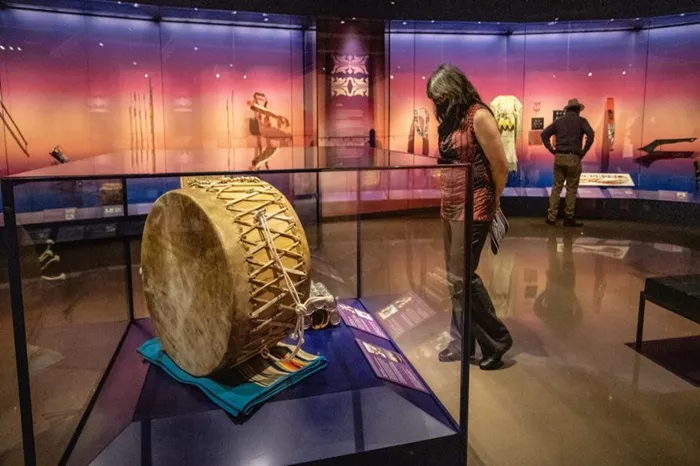Native American literature is a vital part of the cultural heritage of the United States, offering profound insights into the history, traditions, and experiences of indigenous peoples. Several institutions focus on preserving and showcasing Native American literature, but one museum stands out for its remarkable collection: the National Museum of the American Indian (NMAI). With a wealth of books, manuscripts, and other written works representing over 1,200 indigenous cultures, the NMAI is a leader in preserving and promoting Native American literary traditions.
National Museum of the American Indian (NMAI): A Hub for Native American Literature
Located in Washington, D.C., and New York City, the National Museum of the American Indian is part of the Smithsonian Institution and is one of the most important museums dedicated to Native American culture and history. It houses one of the most extensive collections of Native American arts and artifacts, including a wide array of written works.
Collections: A Rich Tapestry of Native American Literary Heritage
The NMAI’s collection includes a variety of materials related to Native American literature, ranging from traditional storytelling and oral histories to contemporary writings. The museum’s literary holdings represent over 1,200 indigenous cultures from North and South America. These collections contain books, manuscripts, journals, and other written works that illuminate the diversity and richness of Native American traditions.
Many of these materials are rare and invaluable, preserving centuries of indigenous storytelling and cultural expressions. The collection is vast and includes works by notable Native American authors, such as Sherman Alexie, Joy Harjo, and N. Scott Momaday, as well as lesser-known voices whose works have had a significant impact on their communities and beyond.
Special Features: Exhibitions and Programs Promoting Native American Literature
The NMAI offers special exhibitions and programs that highlight Native American literature. These exhibitions often focus on the intersection of literature, art, and culture, offering visitors a deeper understanding of how indigenous stories are told and transmitted.
For example, the museum has hosted exhibitions that showcase Native American authors, poets, and playwrights, exploring their works within the broader context of Native American art, history, and social issues. These exhibitions may include manuscripts, rare books, photographs, and multimedia presentations that explore the rich tradition of storytelling in Native American communities.
The museum also organizes lectures, panel discussions, and author readings, where visitors can hear directly from Native American writers and scholars. These events create an interactive and immersive experience, allowing for a deeper appreciation of Native American literature and its cultural significance.
Research Facilities: A Treasure Trove for Scholars and the Public
In addition to its public exhibitions, the NMAI provides research facilities that are invaluable resources for scholars, students, and the general public. The museum’s libraries and archives house a wealth of primary source materials related to Native American literature, including unpublished manuscripts, personal papers, and historical texts.
These research facilities are accessible to both scholars and the general public, making the museum an essential destination for anyone interested in studying Native American culture and literature. Researchers can access a vast range of materials, from early translations of Native American oral traditions to contemporary works by indigenous authors. The museum’s archives offer a unique window into the evolving literary landscape of Native American communities.
Visitor Information: How to Explore Native American Literature at the NMAI
The National Museum of the American Indian offers several ways for visitors to explore its vast collection of Native American literature. In addition to its permanent exhibitions, the museum offers guided tours that focus on the museum’s literary holdings. These tours provide an in-depth look at the museum’s collections, allowing visitors to engage with the stories and histories behind the written works.
The NMAI also offers educational programs for visitors of all ages, including school groups, families, and individuals. These programs are designed to foster a deeper understanding of Native American culture and literature. They may include hands-on activities, storytelling sessions, and discussions led by experts in Native American literature and culture.
For those unable to visit the museum in person, the NMAI also offers online resources, including virtual exhibitions, digital collections, and educational materials. These resources make it possible for people around the world to engage with Native American literature and learn more about indigenous cultures.
Conclusion
The National Museum of the American Indian stands out as one of the most important institutions for preserving and promoting Native American literature. With its vast collection of books, manuscripts, and written works, the museum offers an unparalleled opportunity to explore the rich literary traditions of over 1,200 indigenous cultures. Through its exhibitions, programs, and research facilities, the NMAI plays a crucial role in ensuring that Native American literature is preserved, celebrated, and shared with the world.
Whether you are a scholar, a student, or simply someone interested in learning more about Native American culture, the National Museum of the American Indian is a must-visit destination for anyone seeking to explore the depth and beauty of Native American literature.

